On the night of 9th-10th September 2025, whilst carrying out a major air attack on Ukraine, the Russian military sent a number of UAVs well beyond Ukraine’s borders into Poland, a NATO member state, with several UAVs being shot down by a joint NATO air mission and one of the UAVs being found crashed more than 300km inside the Polish border.
At the time of writing, the number of UAVs believed to have breached Polish airspace varies from 8 to 20+, but the incursion has been acknowledged by NATO and Poland’s leaders, who are seeking to invoke Article IV of the NATO Charter.
This article is the opinion of the author and not necessarily that of the UK Defence Journal. If you would like to submit your own article on this topic or any other, please see our submission guidelines.
Article IV states: “The Parties will consult together whenever, in the opinion of any of them, the territorial integrity, political independence or security of any of the Parties is threatened.” – The last time Article IV was invoked was when Russia launched it’s “special military operation” to invade Ukraine in 2022.
The satirical Twitter account “Darth Putin” commented the night before the attack: “The “coalition of the willing” should be called the “coalition of the meetings”. They don’t do blitzkrieg, they do sitzkrieg.” While satirical, there is growing consensus that this is no longer a joke. NATO and other western allies have been more than happy to hold frequent summits and meetings regarding the future of Ukraine and Russia’s illegal invasion of it, but have realistically done little more than supply aid to Ukraine to try and prevent it.
And in a “Trump wants peace” era of international politics, too many European nations are perhaps still looking to Washington for leadership and decision making, when the simple fact is that after 3 years of war in Europe, they should be looking at themselves.
Poland has been re-arming for some time now, in recognition of the fact that if Russia ever does push beyond Ukraine, it is squarely in the line of fire. Likewise for Estonia, Lithuania and several of the other smaller eastern-European nations. The UK, France and Germany meanwhile have seemed largely inactive, although Germany’s new Chancellor Merz seems to be ramping up efforts to face the coming threat.
But why does a couple of dozen drones flying into Polish airspace matter? Because it’s Russia’s way of testing NATO’s resolve. The drones haven’t explicitly attacked military or civilian targets in Poland, and thus the case to argue a NATO Article V situation is loose at best, but the problem is that if NATO simply does nothing more than have meetings and issue condemnations, the alliance will suffer from Boiling Frog Syndrome.
Boiling Frog Syndrome: “If you drop a frog in a pot of boiling water, it will of course frantically try to clamber out. But if you place it gently in a pot of tepid water and turn the heat on low, it will float there quite placidly. As the water gradually heats up, the frog will sink into a tranquil stupor, exactly like one of us in a hot bath, and before long, with a smile on its face, it will unresistingly allow itself to be boiled to death.” (Source: The Story of B (1996), by Daniel Quinn)
Russia’s invasion of Ukraine should have been the cause of an immediate response from NATO, despite Ukraine not being a NATO member. 50+ years ago in the Cold War, Russia’s invasion of Ukraine would have been viewed in much the same way as the Vietnam and Korean wars – efforts to be made to stop the spread of an evil regime. Unfortunately, in an increasingly hesitant world, with political leaders less focused on genuine global cohesion, the invasion of Ukraine was allowed to occur with little-to-no actual steps taken to prevent it, nor to prevent it happening elsewhere.
Among other issues, that has emboldened China, who continue to set their sights on an invasion of Taiwan, likely an event that will occur before 2030. China continues to watch the situation in Europe, knowing full well that if NATO is unwilling to defend it’s own borders or those of Ukraine from Russian forces now, it will be even less willing to defend Taiwan in the years to come. Combined with a return of American Isolationism and “America First” policies, the situation in Europe becomes a litmus test indicating the likely response in east-Asia later in the decade.
NATO has sat back and issued condemnations and held meetings for far too long, while Ukraine has done it’s best to hold Russia in a stalemate in eastern Ukraine. Russia’s economy is collapsing, but so too arguably is Ukraine’s manpower and equipment levels (the collapse only being stemmed by clever tactics and military aid from allies in Europe). NATO’s frog has been sat in the pan for a while, and Russia continues to turn up the heat – but will NATO’s leaders notice and respond appropriately? To all appearances, the answer seems to be no.
What starts as a couple of dozen drones over Poland today, could be hundreds of drones over several NATO countries in the coming months. NATO will need to make a decision at some point when it’s going to accept that it is at war with Russia. The grey-zone conflict that Russia has been fighting with NATO for many years cannot be ignored – whether it’s the Novichok poisoning in the UK, undersea cable interference in the north, electronic warfare operations out of Kaliningrad or airspace incursions over Eastern Europe, Russia is doing what it (and its predecessor the Soviet Union) has always done – testing NATO’s responses and resolve.
NATO must draw the line somewhere, and I don’t doubt the majority of ordinary citizens would rather the line be drawn now at Ukraine, than let history repeat itself with lines someday drawn in Berlin, or the English Channel.


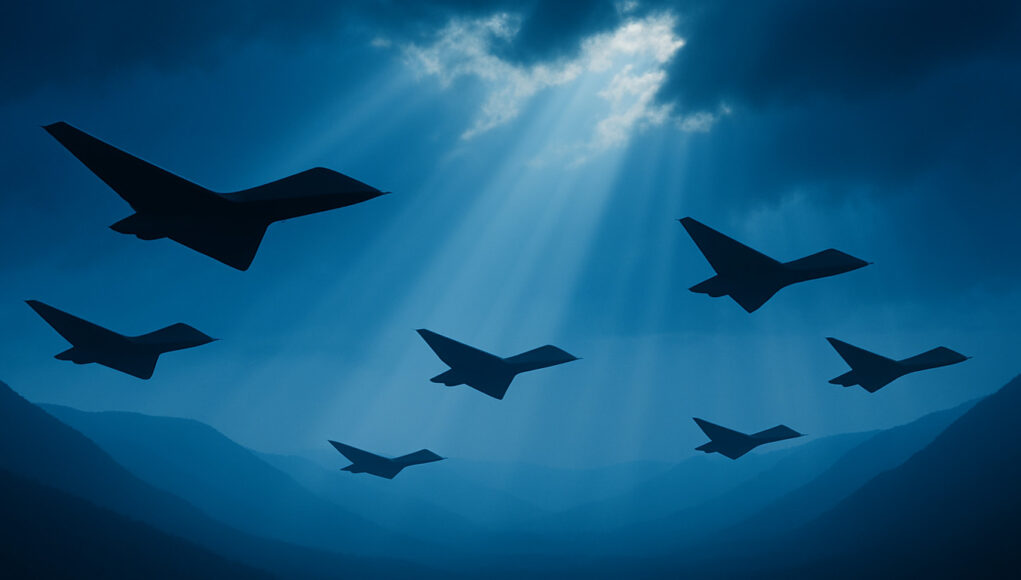


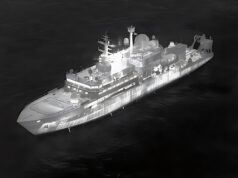
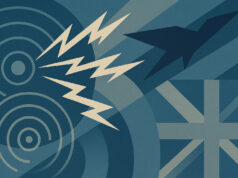
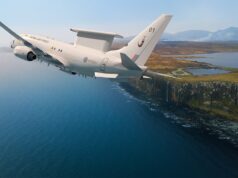
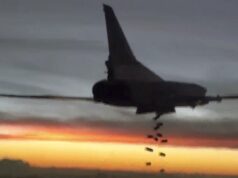
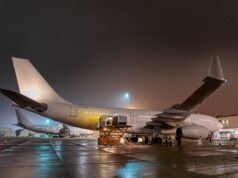
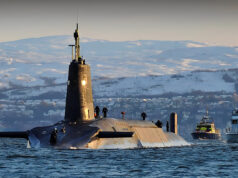



The other reason frogs might not jump out of boiling water is when they are in 32 pieces. The Crinks ability to dismember through social media should not be underestimated.
Absolutely. Their aim is to undermine the democratic nations by creating and enhancing division, doubt and fear to undermine public resolve.
We in the West seem to be continually on the back foot, struggling to maintain public unity on seeing off the CRINKS threat, while struggling to turn off the Russian barrage of social media disinformation and propaganda and to curtail grey zone attacks, whether cyber, cable-cutting, arson or a full-out blitz on our vulnerable infrastructure if things hot up.
ENATO needs to get on the front foot militarily right away. We need an extensive air defence network forward-based in northern and eastern Europe. It is coming together but oh so slowly amd patchy.
We need to move airpower forward to back the Eastern European frontline states, with both air defence and interdiction aircraft.
We need to move land forces forward similarly, so there are minimum 5 NATO Western European heavy divisions standing ready to reinforce the frontline allies.
We need to be fielding a mass of long-range missiles able to strike any buildup.of Russian forces heading our way.
Ditto drones, both long-range ISTAR and a mass of FPV ones, plus a big increase in low-level air defence and counter unmanned
aerial systems (LLAD/C-UAV).
At sea, we need to get some ASW squadrons formed and deployed, as NATO is thin on the ground here
There is a mass of individual projects going on across ENATO, some collaborative across 2 or more nations, others like FPV drones and UUVs a mad scramble with each doing their own thing and an enormous duplication of cost and effort. With slow progress on increasing munitions and missile stocks.
NATO and EU need to pull all these bits into a coherent ENATO plan, NATO on the military elements, EU on the financial resource and political resolve.
Then we need to tackle the grey zone threats. We are going to have to lean on big tech here, whether Trump likes it or not. We are going to need to go on the cyber attack route, ramping up ia mass of political information warfare on what passes for CRINKS sociall and government media, matching them one for one with cyber attacks, malicious malware and the rest.
They are having fun setting fire to military installations, IKEA stores and whatever. Pretty sure that the European intelligence services could arrange counter-strikes in Russia and its straps, so it becomes crystal cleat to Putin that every Russian incursion will be met with an automatic NATO response, and that response should be double the original Russian offence.
While it may be tempting to just sink their cable-cutters and no-flag tankers, that is not our style and would be an immediate causus belli. But where there is clear proof of their illegal actions or status, we should impound them, imprison the crews, sentence those foremostly to long prison sentences.
All this to say that the time for sitting timorous and hoping that POTUS will take the lead are over. ENATO.has 3 times Russia’s population, about seven times its GDP, so no real reason to cower behind the parapet.
Which brings us to the ‘peacekeeping’ force planned for Ukraine, if Putin consents to let it in, which is of course the last thing he will ever do. A force of 20,000 is hopeless to man a 600-mile border, even if the Ukrainian forces are holding the front line and the NATO forces are the tactical and strategic reserves.
It would need three to four times that number. NATO needs to crack the whip here. Every one of the 31 (I.e. Excluding the USA) should put some boits on the ground, in proportion to their size. There can be no Italian. Spanish, Turkish. Hungarian, Slovakia or Tutkish backsliders and opt-outs and any that do should immediately be declined for money from the EU defence pot and frozen out of Euro defence initiatives and collaborative deals. The coalition of the willing should base its troops on Ukraine’s north-west and south-west borders and be ready to move into Ukraine I’d ordered, whether or not Putin consents.
We won’t achieve anything by blethering away in endless allied meetings, we need to stand up to Putin and pals and see off the little dictator.
Cripes, it was Nato expansion to the door steps of Moscow that resulted in the Ukraine war. It is no different than Russian missiles in Cuba that should have started a nuclear war, except a Russian sub commander refused to fire his nukes. Thank goodness Kennedy was in charge and not the Pentagon, because the military always solve every problem with war. The brightest minds could not solve the Vietnam War but the problem was given to the military – – – and that was the problem.
Nonsense. It wasn’t as if the countries were invaded and taken over. They were independent countries with democracies who chose to join an alliance, as was their right.
The fact is Russia is trying to rebuild its old empire and Ukraine was the first in line. We should have bolstered Ukraine when they initially took over over Crimea, and imposed massive sanctions at that point. How many lives did that inaction cost?
Since when did vlad have a say on who joins nato?
Agree with all George has said, and we are now in the pot and the water is starting to boil.
Putin isn’t a man that understands political etiquette, only that which inflates his ego, and like Hitler he’ll us the ignorance of others to advance his cause.
Poland is already ramping up its military along its eastern borders as they are well aware of the treat from Putin, and his minions.
NATO needs to ‘wake-up’ to Russian aggression, because the drones entering NATO countries aren’t a coincidence, but a clear and obvious attempt to probe NATO’s air defence. Like the 30’s history is repeating itself because the leaders of the West are too worried about being in power than the protection of their voters, and the internal political issues from immigration etc!
Military budgets have been stripped back to the bare bone over the last 30 yrs or so, and now we are seeing the truth of ‘peace dividend’ politics.
Many posting on here know what ought to be done, sadly as the writer suggests, only something from Rus that is unequivocally hostile, clearly attributable AND directly affects the NATO “grown ups” will generate a meaningful response, and even then, almost certainly would not result in a unified response from all NATO members.
Does a NATO military response require agreement from all members in all circumstances?
I reckon the likely scenario in a time critical situation, would be a coalition of the willing reacting outside of NATO mechanisms, because of uncertainty about a unified response from all members – thoughts?
Has NATO become ineffective against the greatest threat – Rus – because of over expansion?
Say what you want, but the wests diversity push is a massive weakness when it comes to grey zone warfare. Homogenous populations do not divide and fracture so easily.
As if the ‘diversity’ push was not to meant to weakened the nations. It always was communist subversion. The nations where the bulwark if the historical West and mass immigration and ‘diversity’ is clearly their death.
I agree to a extent. Clearly some cultures are better than others
The West has no stomach for war against Russia, not that it is different vice versa. All great powers know their governments would collapse within if they went into kinetic conflict externally with each other. All givernments are weak and hated by the people in every great nation. Nobody would rally round and pretend it would be over by Christmas. There would be revolution to oppose such a stupid war.
Don’t worry guys, we might not be able to afford an effective military but we can at least afford taxis. Just not for the workers, or the elderly, or the disabled.
The Russians want us to react. Putin is desperate to justify the increasing hardship he is placing on his people.
To not react , to ridicule him is the best option.
Eg clearly the Russian airforce navigation standards are very poor, if the need lessons in navigation NATO is happy to oblige .
Defense Geek is typical of war mongering. … It is all Russian fault. But putting missiles and western military in Ukraine is perfectly okay. And if Russia puts missiles in Cuba it is totally unacceptable. The West is perfect on the side of good, Russia is the absolute bad on the side of bad. No questions allowed, no criticism allowed or you will be a lib left radical Commie. War is the answer to all problems.